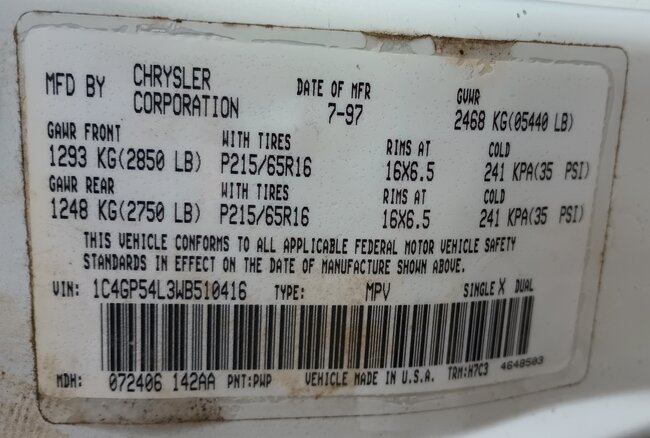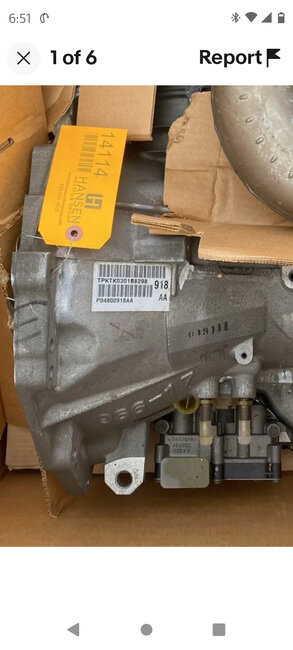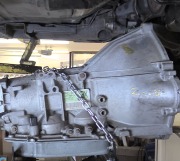Take a step back for a moment and lets straighten out some misconceptions. Transmission cooler hoses blow all the time. That is not a reason to replace the entire transmission. The loss of fluid will eventually cause air to get sucked up by the pump. That air can be compressed and will prevent the clutch packs from engaging. The slippage at first will cause excessive wear, but will be very noticeable. If it is able to continue long enough, it will take miles for internal damage to occur.
The next issue is the valve assembly. That is a series of electrically-operated valves that control fluid flow to the various clutch packs. Changing that isn't going to solve anything.
Another concern is the wrong fluid. We run into that all the time on all different brands of vehicles. The symptom is the wrong fluid formulation causes the clutches to engage too harshly. There needs to be a little slippage as engagement occurs, to make for a smooth. Comfortable shift, not one like in a race car. At around 45 mph, give or take, an internal clutch in the torque converter will gradually start to engage. This is a Chrysler innovation from the mid '70s for improved fuel mileage. When the wrong fluid is used, the clutch will engage too harshly, engine torque will break it free, then it will try to grab again. You feel that as a shudder during that period of engagement, and that can be just annoying all the way to pretty harsh. One of my Caravans did that for years. To stop that shudder or to prove that is what is happening, simply hold road speed and the accelerator pedal perfectly steady, at around 40 - 45 mph, then when the shudder occurs, lightly tap the brake pedal with your left foot. That signals the torque converter clutch to disengage. Once the computer sees you are not planning on coming to a stop, the clutch will re-engage in about three seconds. The wrong fluid doesn't do other damage to the transmission. In some cases you can have an additive in one brand of fluid that isn't compatible with the additives in a different brand, but that doesn't lead to a major breakdown. This applies much more to engine oil. For example, when you change from one brand to another, the new oil might have a detergent that will attack the seal conditioner in the old oil. There's also dispersants that carry sludge to the filter, anti-corrosion agents, and viscosity index improvers that may not be compatible, but at worst, they lead to oil leaks, not breakdowns.
P0734 - Gear 4 Incorrect ratio
P0735 - Gear 5 Incorrect ratio
These fault codes set when there's slippage in a clutch pack. I'm questioning code P0735. There's only four clutch packs in your transmission, and in various combinations, they create four forward gears. There's a signal from an "input speed sensor" and one from an "output speed sensor". The Transmission Computer knows that for a given engine speed, the road speed must be a certain value, based on the gear the transmission is currently in. When slippage occurs in a clutch pack, engine speed goes too high for the current road speed. That's how it tells there's slippage and which clutch it's occurring in. Those codes are going to set if the slippage was from the loss of fluid. All that is needed is to erase the codes. That is done with a scanner, or, for your model, simply removing a battery cable for a minute.
This computer-controlled transmission is another of Chrysler's innovations that others use their own version of now. One of the things they included is the ability to read the "clutch volume index", (CVI) on a scanner. That's a set of four numbers representing the volume, in ccs, of fluid it takes to apply each clutch pack. As the fiber plates wear down, it takes more and more fluid to fill the drum before the plates are fully squeezed together and lock up. A transmission specialist can tell by those numbers how much life is left in each clutch pack. As I recall from training a long time ago, one of the common maximum values was 80 ccs, but don't hold me to that. The specialists should know, or it can be found in the service manual. If one of those numbers is nearing its maximum, that would be reason to install a rebuilt transmission.
Another part of this design is the computer constantly updates its shift schedules in response to that clutch wear. There's advantages and disadvantages to that. The good part is years ago with regular hydraulically-controlled transmissions, we had a good two or three years of warning that a rebuild was in our future, based on sloppy upshifts and engine runaway during those shifts. This was worse at very low speed, gentle up-shifts. On your transmission, the computer sees that clutch plate wear and updates, or learns, how to make the shifts so they stay as crisp and solid as the day it was new. For example, it will apply third gear, then wait just a little longer before it releases second gear. That way, by the time second gear lets go, third gear has had time to lock up. You feel the solid shifts, all the way up to the day the computer can't update any further. That's when the slippage occurs and is detected, and the computer puts it into limp mode where it stays in second gear. That's to allow you to drive slowly to the repair shop without needing a tow truck. The disadvantage is you never got that sense of wear taking place. One day it shifts fine. The next day it goes to limp mode. ==
One way to work around that, often for months, is just as it's getting ready to up-shift into the next gear when the slippage occurs, accelerate a little harder than normal to get past that speed, then let off the accelerator pedal until the up-shift completes. Once the clutch has locked up, it can stay that with no slippage until a lot more wear takes place.
I have to apologize. I see the error of my ways. I copied the wrong fault code. Should have posted:
P0733 - Gear 3 Incorrect ratio
P0734 - Gear 4 Incorrect ratio
The four clutches are the front clutch, rear clutch, under-drive clutch, and the over-drive clutch. Multiple clutches are engaged for each gear, so those CVI numbers are needed to know which clutch is slipping.
Thursday, March 7th, 2024 AT 10:39 PM






